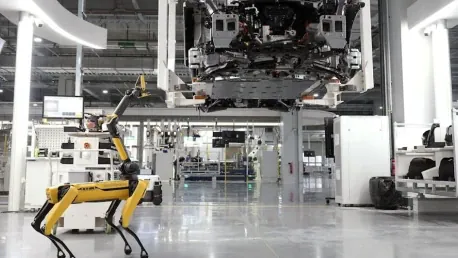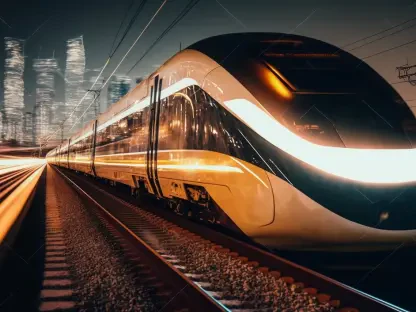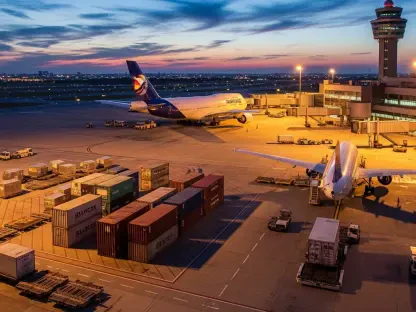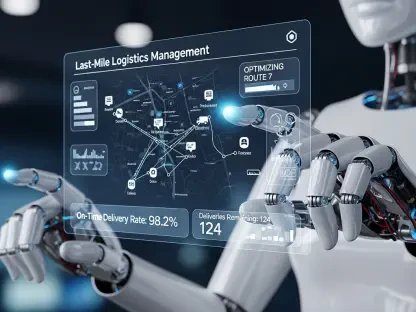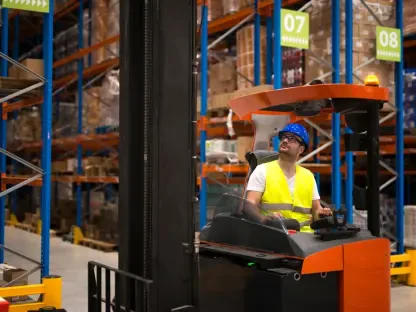In the ever-evolving realm of automobile manufacturing, the industry is witnessing an unparalleled transformation fueled by advancements in AI and robotics. This technological progression, which began over a century ago with Ransom Eli Olds’ modern auto assembly line in 1901, saw a significant leap with Henry Ford’s moving assembly line in 1913. Fast forward to the present, and we are now entering an era marked by the seamless integration of AI and smart factory robots, fundamentally reshaping the landscape of car production and maintenance. AI and robotics have become instrumental in boosting production efficiency, enhancing quality, and creating new opportunities within the industry.
Enhancing Production Efficiency Through Automation
The automation of production processes within the automotive industry has not only accelerated manufacturing timelines but also significantly improved quality and precision. Industrial robots are now commonplace in assembly lines, performing complex tasks such as welding, engine installation, and painting with a level of accuracy and consistency that surpasses human capabilities. The use of robots has led to enhanced weld quality, meticulous engine installation, and flawless paint jobs, all of which contribute to the overall improvement of vehicle quality.
Moreover, automation has played a crucial role in ensuring safety adherence in automobile manufacturing plants. By taking over dangerous and monotonous tasks, robots have reduced the risk of workplace accidents, thereby creating a safer environment for human workers. Contrary to the misconception that automation threatens employment, it has, in fact, transformed career paths and skill sets within the industry. Workers are now being trained to oversee and maintain these advanced machines, leading to the creation of new job opportunities and the evolution of existing roles.
The integration of AI-driven robotics is further optimizing production processes by allowing for predictive maintenance and real-time monitoring. This capability ensures that manufacturing equipment is always operating at peak efficiency, reducing downtime and minimizing maintenance costs. The seamless coordination between robots and human workers is facilitating a more streamlined and efficient production process, ultimately leading to cost savings and enhanced profitability for automobile manufacturers.
Transforming Vehicle Maintenance and Services
Beyond the production line, the influence of robotics extends into the realm of vehicle maintenance, offering numerous benefits to both technicians and customers. Robots equipped with AI capabilities are now being utilized in maintenance centers to automate tasks such as tire replacement, oil changes, and diagnostic checks. This automation not only reduces manual labor but also ensures that these tasks are executed with higher precision and consistency, leading to improved service quality.
AI-driven maintenance centers are revolutionizing the customer experience by significantly reducing wait times. With robots handling routine maintenance tasks, technicians can focus on more complex issues, leading to faster turnaround times and increased customer satisfaction. Additionally, the use of AI in diagnostics allows for the accurate identification of potential issues before they become major problems, ensuring that vehicles remain in optimal condition.
The data generated by AI-driven maintenance centers is proving invaluable for further improvements in production and future maintenance services. By analyzing this data, manufacturers can gain insights into common issues and trends, allowing them to make informed decisions and implement proactive measures. This data-driven approach not only enhances the efficiency of maintenance processes but also contributes to the overall improvement of vehicle quality and reliability.
Future Trends and Market Growth
In the constantly advancing world of automobile manufacturing, we are seeing an unprecedented transformation driven by the progress in AI and robotics. This journey of technological evolution, which had its groundwork laid over a century ago with Ransom Eli Olds’ pioneering auto assembly line in 1901, saw a revolutionary shift with Henry Ford’s moving assembly line in 1913. Today, we stand on the cusp of a new era characterized by the harmonious integration of artificial intelligence and intelligent factory robots, significantly altering the field of car production and upkeep. These advanced technologies are now indispensable for improving production efficiency, bolstering quality, and creating novel opportunities within the automotive sector. AI and robotics not only streamline the manufacturing processes but also elevate the precision and reliability of vehicle maintenance, marking a new chapter in automotive innovation. The industry now looks ahead to further advancements, aiming to unlock even greater potential and shape the future of transportation.
